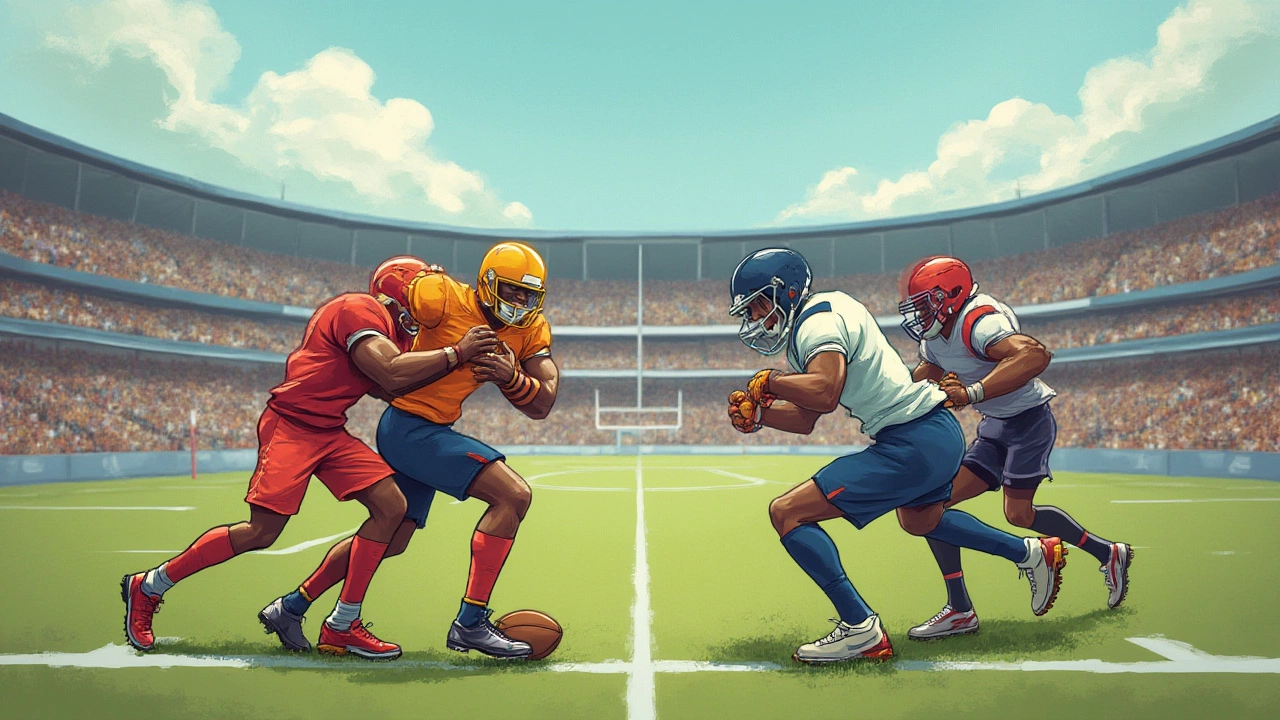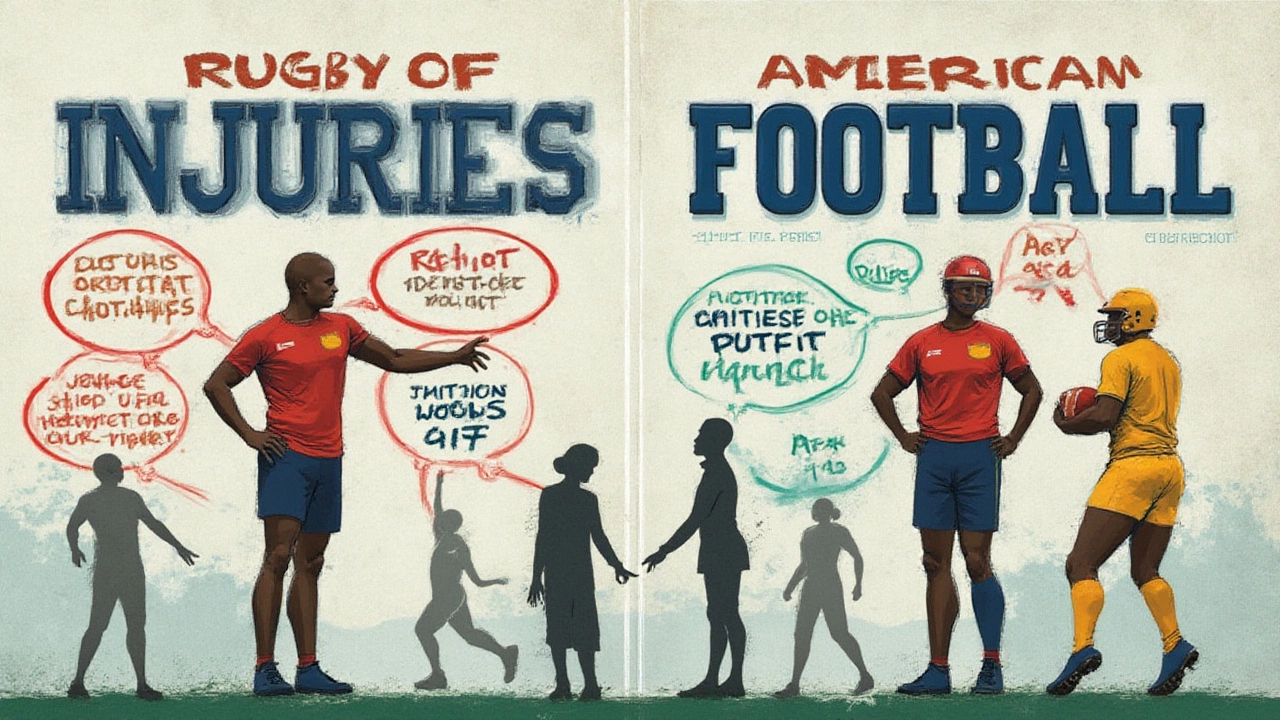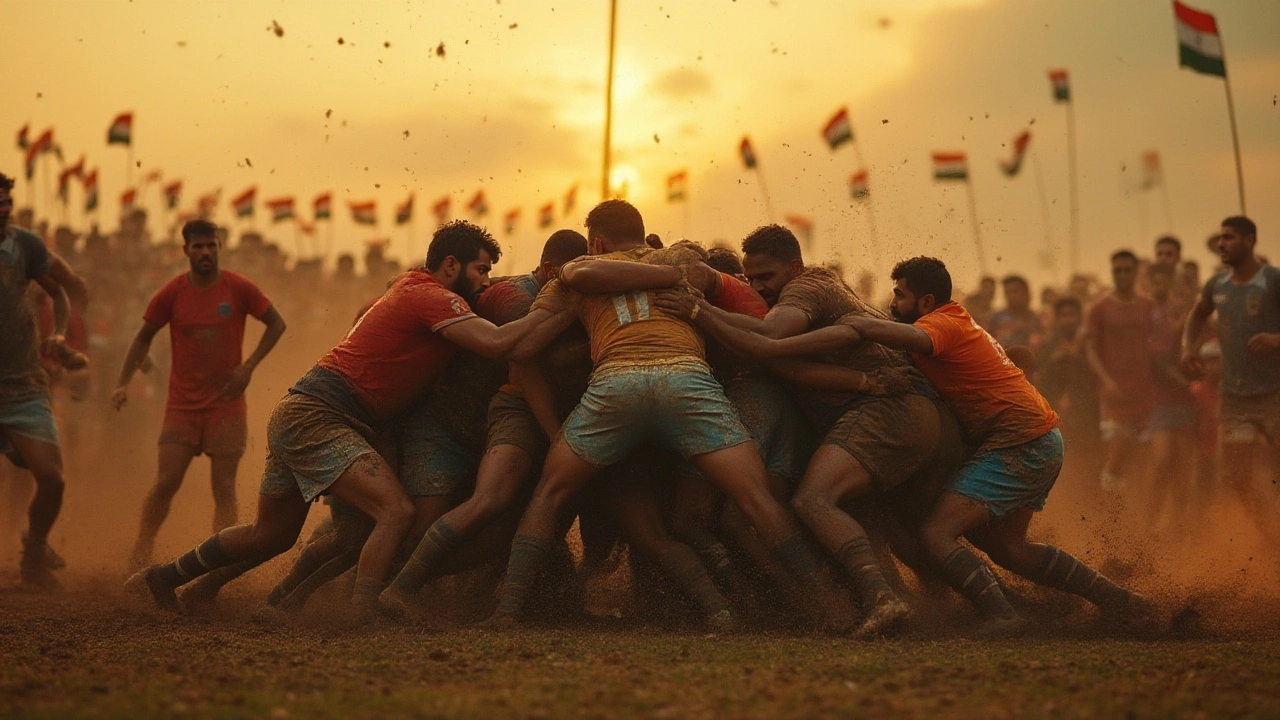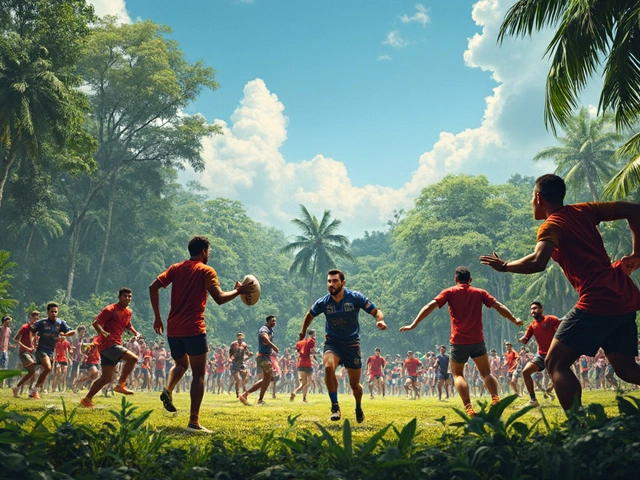Picture this: a wall of muscle in a muddy field, bodies crashing without an ounce of hesitation, no pads, no helmets—just raw, physical collision. Now, think of the NFL: blinding lights, armored players, yet still some of the loudest hits you've ever seen. Here’s the question people can’t stop asking— is rugby more violent than American football? It’s a topic that fires up intense pub debates and sparks nervous laughter from parents eyeing their kids’ first scrum or tackle. Let’s pull back the curtain and get into the nitty-gritty, not just with opinions, but real facts, true stories, and even practical tips for surviving the madness if you ever find yourself on a rugby pitch or a gridiron.
Bone-Crushing Contact: Breaking Down Violence in Both Sports
On the surface, rugby and American football might look like distant cousins—each with their own flavor of mayhem. In rugby, players rush toward each other with little more than a jersey, shorts, and a mouthguard. You won’t see big helmets or layers of padding. This means that every hit, tackle, or ruck is skin-on-bone, muscle-on-grit. The tackles are lower, but they’re relentless. If you’ve seen a rugby scrum—eight players on each side locked together, pushing for control of the ball—it almost looks medieval. The “no pads” approach seems reckless, but surprisingly, it makes players tackle differently. With nothing to protect their heads except their own senses, they’re forced to aim lower and avoid those high-impact American football-style tackles that send helmets flying.
Flip to American football—just watch an NFL highlight reel. Gigantic athletes sprint full speed and hit each other with all they’ve got, protected by high-tech gear. You would think the armor keeps them safer. But the reality is that pads and helmets can create a false sense of security, almost inviting riskier and more violent hits. Players go for the kill shot, not just to tackle, but to stop someone dead in their tracks. There’s a reason why football has such a high highlight-reel of huge collisions and why concussion rates are so closely watched.
Here’s an eye-opener: a study from the American Orthopaedic Society for Sports Medicine showed that, on average, American football sees about 4 injuries per 1,000 athlete exposures, while rugby is close behind at 3.9. But the big difference? Rugby injuries are more likely to be cuts, bruises, and sprains, while football injuries skew toward concussions, torn ligaments, and broken bones. That’s not just trivia—it’s the heart of the debate. Padding changes not just safety, but playing style and violence, all at once.
If you want raw numbers, take a look at the table below showing injury rates among amateur and professional athletes:
| Sport | Level | Injury Rate (per 1,000 exposures) | Common Injuries |
|---|---|---|---|
| Rugby | Amateur | 3.9 | Sprains, Dislocations, Cuts |
| Rugby | Professional | Approximately 5.3 | Fractures, Concussions, Muscle Tears |
| American Football | High School | 4.36 | Sprains, Concussions, Broken Bones |
| American Football | College/Pro | Between 5 - 7 | Concussions, ACL Tears, Shoulder Injuries |
So, which is more violent? It honestly depends how you define violence. Is it the force of the hit, or the number of bruises afterward?
The Unforgiving Rules and Enforcement (Or Lack Thereof)
The rules of rugby and American football set the stage for how wild things can get. Rugby is governed by strict standards on tackling—no grabbing above the shoulders, no dump-tackling a player dangerously, and “no arms” tackles draw penalties fast. Referees can actually send players off for foul play, reducing teams to 14 or even 13. Yellow and red cards are common, and major leagues use video assistant referees to clamp down on ugly hits. The logic is brutal but simple: strict rules force players to control their aggression and prevent the truly dangerous stuff from taking over the game.
But here’s the inside story from players: in the heart of the action, things still get heated. Punches and elbows in a ruck are sometimes hard to spot. Old-school players will tell you stories of broken noses, “cauliflower ears,” and gnarly jaw realignments that nobody caught on camera. If you’ve ever seen a front-row forward after a close match, you know.
Now, American football paints itself as safety-first with rules to protect quarterbacks and defenseless receivers. Helmet-to-helmet contact can bring heavy fines or suspensions now, and there are countless “targeting” reviews every week at the pro level. Here’s the twist though: with so many stoppages, there’s more time to reset—and more expectation of hard-hitting explosiveness with every snap. It’s almost expected. Plus, there’s a culture of “playing hurt” because rosters are deep and competition for places fierce. Some coaches, chasing the next championship, may downplay the impact of a nasty hit, at least until the health report comes out days later.
Both sports have tried to clean up their image, and yet, the violence at the core can’t be erased. Instead, it just shifts form. The peppermint-smooth talking point is “player safety,” but the actual matches tell a different story. If you ever walk off the field in either sport, you’ll feel it for days.

What Science Says: Head Injuries, Concussions, and Long-Term Impact
The science is harsh, and worth paying attention to. Multiple studies—like one from Boston University’s CTE Center—found that nearly 99% of brains from deceased NFL players had signs of CTE, a nasty neurological disease tied to repeated trauma. Here’s the shocking part: you don’t need 20 years in the pros to suffer these effects. Even high school football players showed subtle brain changes after just one season, according to research by JAMA Neurology.
So, does rugby have a similar problem? Concussions are rising, especially in the violent, fast-paced “sevens” format. World Rugby now enforces strict head injury protocols—any sign of concussion, and a player is immediately pulled from the game and subjected to medical checks. There’s even “blue card” systems in some leagues: a ref shows you a card if there’s any hint you took a hit to the head, and you’re out, no arguments.
But rugby tackles generally target the waist or thighs, and players are drilled not to use their heads. Plus, no helmet means you don’t treat your head like a battering ram. That said, repeated collisions add up, especially over a long career. Lifetime studies in New Zealand found that retired professional rugby players have a higher risk of joint arthritis, memory issues, and headaches compared to non-players.
If you want to get technical, researchers measure the "g-force" of impacts. A hard American football hit can crank up over 60 g—enough to cause serious concussion—while rugby’s average big tackle lands just under 40 g. But sustained lower-force impacts, done every minute in a rugged match, add up, too. That’s why you’ll hear old-timers from both games complain about long-term pain, memory fog, or ring-deafness.
The big takeaway? Protective gear in American football doesn’t mean fewer concussions—it just shifts how those concussions happen. Rugby, for its part, asks players to use technique and smarts, but still leaves scars. Nobody escapes contact sports completely unscathed. Here the *violence*—yes, that’s the rugby keyword—is physical, psychological, and sometimes invisible until it’s too late.
Cultural Attitudes and Myths: What the Fans (And Players) Believe
There’s an old joke that rugby is “a hooligan’s game played by gentlemen,” while American football is “a gentleman’s game played by hooligans.” As with all jokes, there’s some awkward truth. In rugby, the culture hammers respect for opponents and referees. Players call the ref “sir,” and questioning a call is practically sacrilege. Nobody spikes the ball. Instead, you’ll see battered hands helping each other up at full time, sometimes even before they wipe away the blood.
In American football, showboating and trash talk are practically woven into the DNA. The sport amps up the aggression with every down. That doesn’t mean it’s less respectful, just that the violence is embraced and even celebrated in highlight reels and pre-game speeches.
Ask a retired rugby prop and he’ll say rugby hurts more, because there’s no armor and “you can’t hide.” Ask a running back with reconstructed knees, and you’ll hear stories about blind-side blocks and helmet hits that stay vivid for years. Social media hasn’t helped the discourse: there are endless “who’s harder?” debates, with viral clips of rugby nose breaks or NFL tackles clocked at insane speed. The result is a kind of myth-making—fans identify with the pain and courage of their side, and each sport almost needs its violence as a badge of pride.
Rugby has gone mainstream in India over the last decade, with Mumbai and Kolkata clubs drawing serious crowds. But overprotective parents still steer kids to cricket or swimming, worried about hospital bills. In the US, concern about football’s injury toll is leading some schools to drop tackle programs entirely—a trend that makes traditionalists nervous, but may be the future.
The bottom-line myth? That either sport is made “safe” by rules alone. The reality, as any ex-player will grumble, is that the violence is always just beneath the surface. It’s part of why the games are so gripping—and controversial.

Practical Tips: Playing, Watching, and Staying Safe
So, what if you’re itching to play? Or maybe you’re just a fan who wants to know what to look for when that next brutal tackle happens? Here’s what experience (and a few scars) have taught me:
- Technique beats fearlessness: In rugby, always tackle with shoulders, arms tight, head to the side. Never go for “big hits” with your head down. In football, keep your head up, too—no “spearing.”
- Don’t skip the warm-up: Most injuries (in both sports) happen cold. Spend at least 10 minutes on dynamic stretching, joint mobility, and a few short sprints.
- Mouthguards are non-negotiable: In rugby, that little piece of plastic saves teeth and lessens concussion risk. In football, even with all the pads, a mouthguard is your best friend.
- Watch for signs of concussion: Dizziness, confusion, or a blank stare? Sit out (as hard as it sounds). Ignoring this can mean real damage later.
- Gear up if you need it: Rugby traditionalists hate scrum caps and shoulder padding, but studies show they help reduce cuts and bruises. In football, keep pads and helmets properly fitted. Equipment that’s “cooler” but doesn’t protect is a problem waiting to happen.
- Respect the limits: If the ref blows his whistle, stop—both games have strict foul play definitions for a reason. Pushing that line can get you banned, or worse, hurt someone else badly.
- Eat and hydrate: Both games will leave you drained. Have slow-digesting carbs and a ton of water before and after. It’s not glamorous, but it helps you survive the full 80 or 60 minutes.
When you’re watching, pay attention to the little things: how players move their heads during contact, whether they spring up quickly, and if anyone’s slow to get back in the line. That usually warns you when someone’s truly hurting—even if the crowd misses it.
If you want the adrenaline without the bruises, try touch rugby or flag football first. It gives you a dose of the action, minus the bite.
In Mumbai, where space is a luxury and monsoons turn grounds to mud, playing either rugby or football is an adventure. Local clubs are eager for newcomers—and fierce about looking after each other. Violence is part of the spectacle, but so is camaraderie. Most ex-players don’t just talk about pain—they talk about the friends made and the moments shared, ice packs and all.





